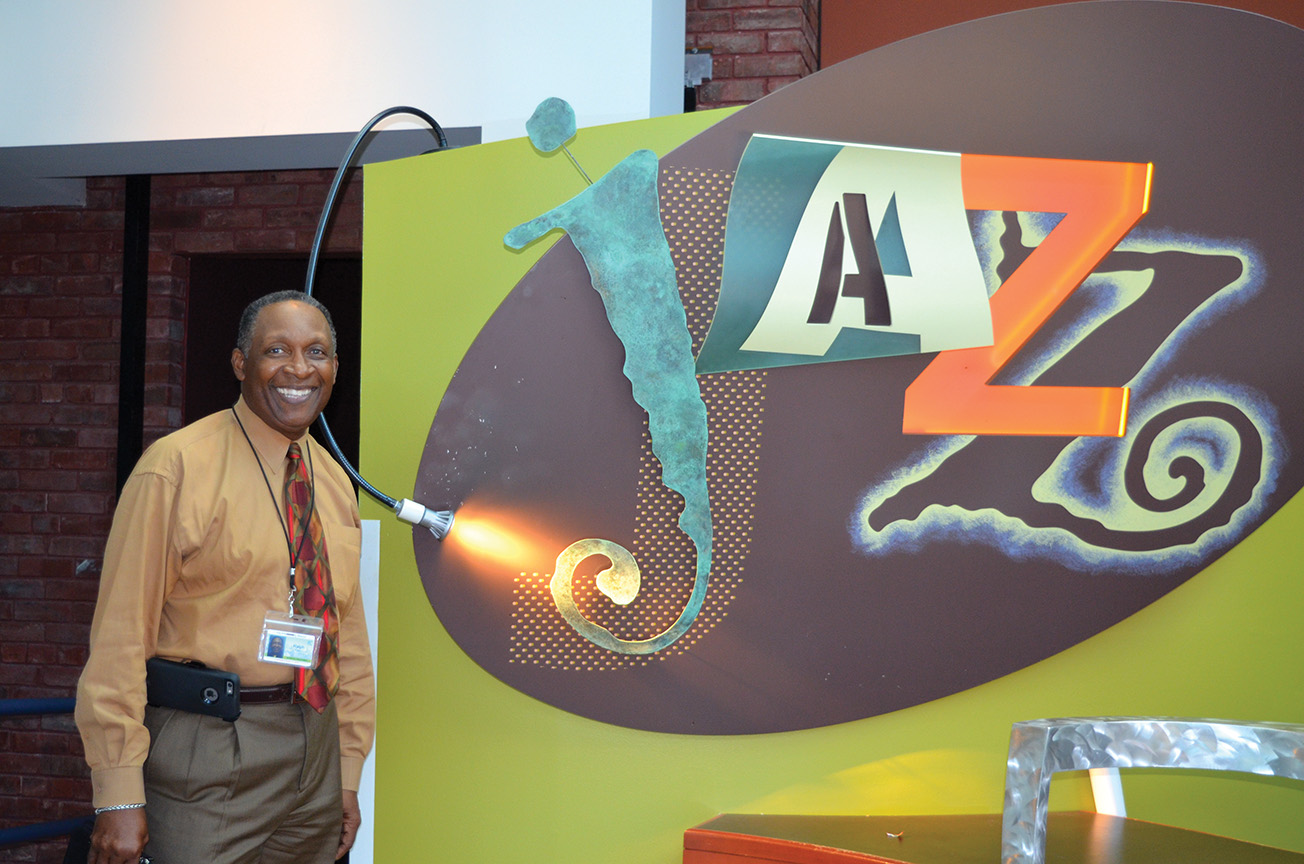Elizabeth Orosco
Northeast News
The American Jazz Museum (AJM) is working to make strides toward a more successful future. The Museum has named Ralph Caro as interim executive director, a year after Cheptoo Kositany-Buckner resigned from the role.
Graduating from the University of Kansas as a biochemistry major, Caro spent 20 years working for Xerox before transitioning to president and chief executive officer of Swope Parkway Health Center for seven years and eventually took the role of chief operating officer at Samuel Rodgers Health Center for eight years.
In a press release distributed earlier this week, the AJM said adding Caro to the leadership team will give the “future executive director a solid foundation on which to build.”
This is yet another phase of the rebuilding process the AJM has seen in the last year.
In the wake of a financial crisis sparked by the net loss of $447,000 from the 2017 Kansas City Jazz & Heritage Festival, the City of Kansas City hired Museum Management Consultants, Inc. (MMC) to conduct an Organizational Assessment of the AJM’s current operations.
After further review, an additional operating deficit of approximately $650,000 was also revealed, among several other issues.
The scathing April 2018 report resulted in the majority of the 22-member board stepping down; a new board was elected in November 2018.
MMC reviewed organizational documents, studied a group of six peer museums, conducted a site visit, and held 40 confidential interviews with AJM stakeholders.
The result was a 62-page report that called for a “complete rebirth” of the museum’s vision, visitor experience, business model, organizational structure, and leadership.
The report detailed 26 recommendations, including closing the museum for one year to plan for the future and revamp the visitor experience.
The City of Kansas City agreed to provide enough funding to pay off all of AJM’s obligations, eliminate the operating deficit, and leave the museum with a positive cash balance to begin the next fiscal year.
In July 2016, a year prior to the failed Jazz & Heritage Festival, the City approved funding for the first phase of a $27.6 million, three-phase improvement plan to restore and transform the district into a “sustainably viable, mixed-use entertainment and resident district,” according to the project website.
Caro said he is working to get the financial operations of the AJM back on track.
“A couple of things that I saw that were missing with the previous administration was that there was an attitude that said ‘I don’t need help.’ I’m the opposite of that. I seek help. I’m meeting with donors, sponsors, lovers of jazz, anybody that has a perception—and there are a wide number of varied perceptions and thoughts to the AJM—I’m willing to meet with them to understand the different points of view. I believe in collaboration and I believe in reaching out to others for recommendations and opinions and suggestions.”
According to the report completed by MMC, the major financial crisis of the AJM was not only the result of overspending, Jazz Festival losses, and changes in leadership, but was due to “insufficient financial accounting systems and insufficient financial expertise on the part of the Executive Director.”
Caro said he is more than qualified for the role.
“Particularly at [Samuel] Rodgers [Health Center], I was engaged in the fundraising. I was the day-to-day liaison with JE Dunn Construction Co. in the building of the new community center. As a COO, all supporting services—everyone except the medical staff—reported to me. Transportation, finance, and HR, all those roles rolled up to me. I had day-to-day accountability and responsibility for managing those departments. I’ve had the gamut. And when you take a look, as far as budgets go, this is a $2 million operation. In my heyday over at Swope, that was a $30 million operation with over 500 employees, and we had over 300 employees at Samuel Rodgers at 7 different locations. So, if I scale the requirements compared to those, I should be able to manage a staff of 15, not counting the part-time wait staff at the Blue Room.”
While the new Board is responsible for redefining the vision, mission, and core values of the AJM, Caro said he is focusing on the infrastructure of the organization.
“I am working on the basics: policies, procedures, checks and balances, relative to everything that we do here, HR policies, procedures, job descriptions, performance evaluations, the basic blocking and tackling that any organization has to have in order to move forward. It’s bringing stability to the organization.”
Beyond the core structure of the AJM, Caro said he is working to re-establish credibility in the community.
“We have promised that we would bring dignity, we would bring integrity, transparency, and we want to be a good steward of the assets entrusted to us that the city owns, and we want to be good neighbors to the other folks here in the 18th Street District. As the District goes, so goes we all.”
The shake-ups and leadership changes at the AJM, also took a toll on the employees, Caro explained.
“I’m trying to build the team; the culture here had eroded. And the staff hasn’t been shown any love in a long, long time. No one to say thank you for the job, thank you for staying with the organization through these turbulent times.”
Simple changes, and a fresh coat of paint, he noted, have gone a long way.
“It plays on your work environment when you come to a place everyday that is dull, dingy, has been neglected for so terribly long, and the city has been a great partner in this thing. They have asked me what we need to do and I said paint. True to their word, the painters had already been out. That alone has uplifted the morale of the employees to see that somebody does care about what is happening down here. It’s been a great deal of satisfaction and pride to see smiles on their faces again.”
The assessment findings of the MMC report also included the revamping of the visitor experience. This, Caro said, will be up to the Board, but he was choosing to focus on one thing.
“What I’m preaching is customer service. As for our patrons and customers, we have to give them the utmost respect and dignity, and we have to be sympathetic and understanding to their needs and requirements.”
Caro said they have worked to replace and repair 99 percent of the technology in the museum, including projectors, computers, and new, updated, working headphones in all the exhibits.
In the current AJM Strategic Plan (2016-2020), one long-term goal is to seek accreditation from the American Alliance of Museums (AAM).
Accreditation is a voluntary program that signifies a museum is committed to excellence, accountability, high professional standards, and continuous institutional improvement.
“It will be years before AJM is ready to apply for accreditation, but the museum industry standards laid out by AAM should be a touchstone for AJM’s revitalization,” the report states.
Caro seems to agree.
“It’s not realistic in my opinion, at this juncture. It’s a good template because whether you make it or not, at least you understand the best practices and you can aspire to do those. When I look at what the requirements are to become accredited, in my estimation, it’s a very ambitious goal. Realistically, if we had the necessary resources, I think you’re looking at three to five years before you could even have that conversation in a serious vein.”
While he continues to work on the infrastructure, Caro said he also pushed to have the museum open on Mondays during the summer months, beginning June 3.
“With extended weekends coming up, we need to be open on Mondays.”
Understanding that his role is temporary, Caro said all his work will be with the future, permanent executive director in mind.
“My goal right now is to make certain that I leave this position with an infrastructure in place, including policies and procedures, particularly when you take a look at the HR piece. When there haven’t been performance appraisals or performance evaluations, people are unclear of their job duties and responsibilities and how they’re going to be judged on the performance of those job duties and responsibilities. I want to leave that in place and the customer experience with all the exhibits working.”
When asked what he would like to tell Kansas Citians, Caro had this to say:
“With this board, and with the continued dedication of our staff and employees, give us another opportunity. It will be a refreshing experience. Come back to the museum if you haven’t been in a while. Just come and enjoy the district.”
The Board is currently looking to fill more seats to be able to work on an updated Strategic Plan for the museum. As of this writing, there are seven Board members, and Caro said he anticipates hearing names of additional, suggested members during the Board meeting on Tuesday, May 21.
To learn more, visit americanjazzmuseum.org.



















